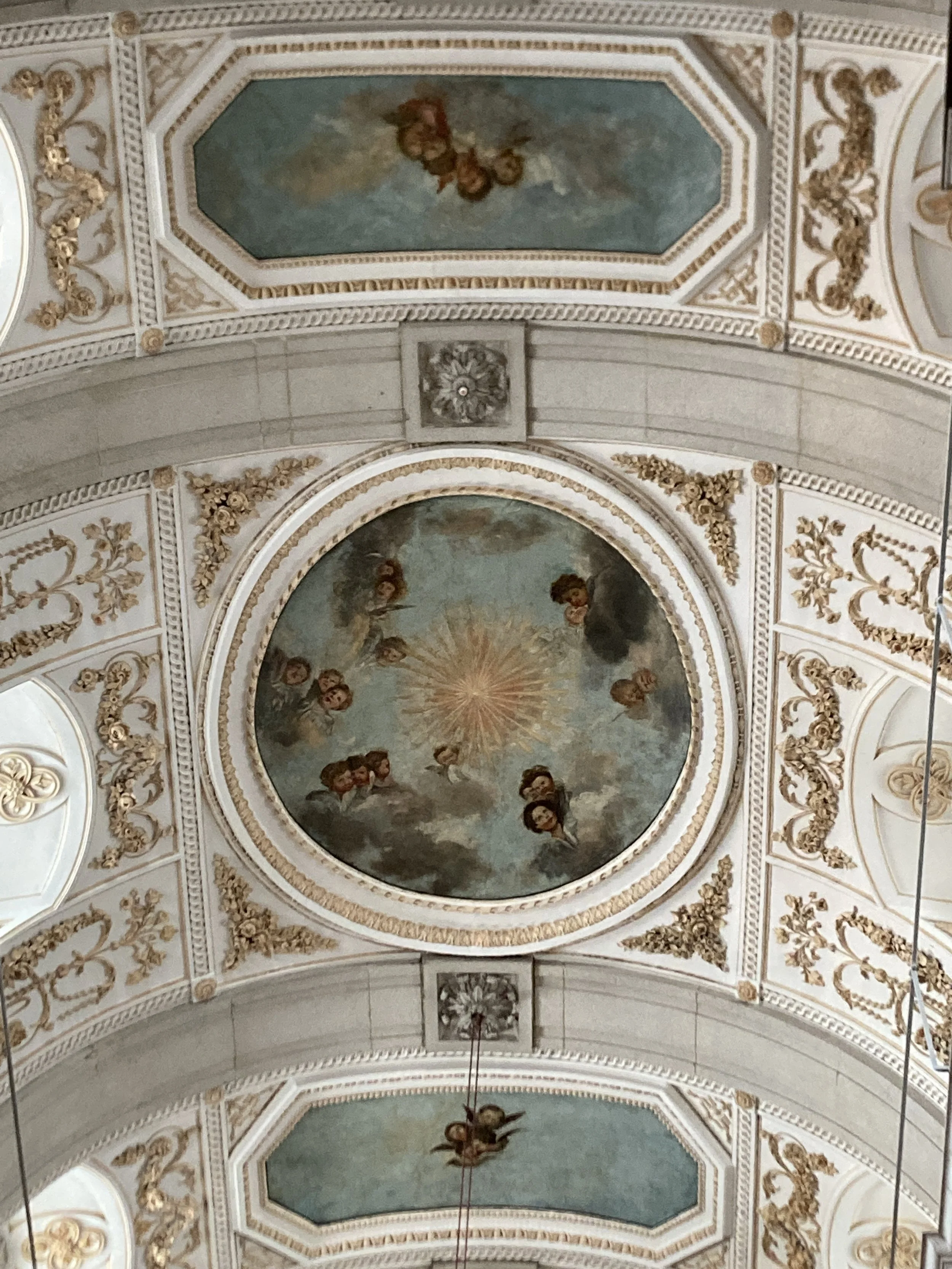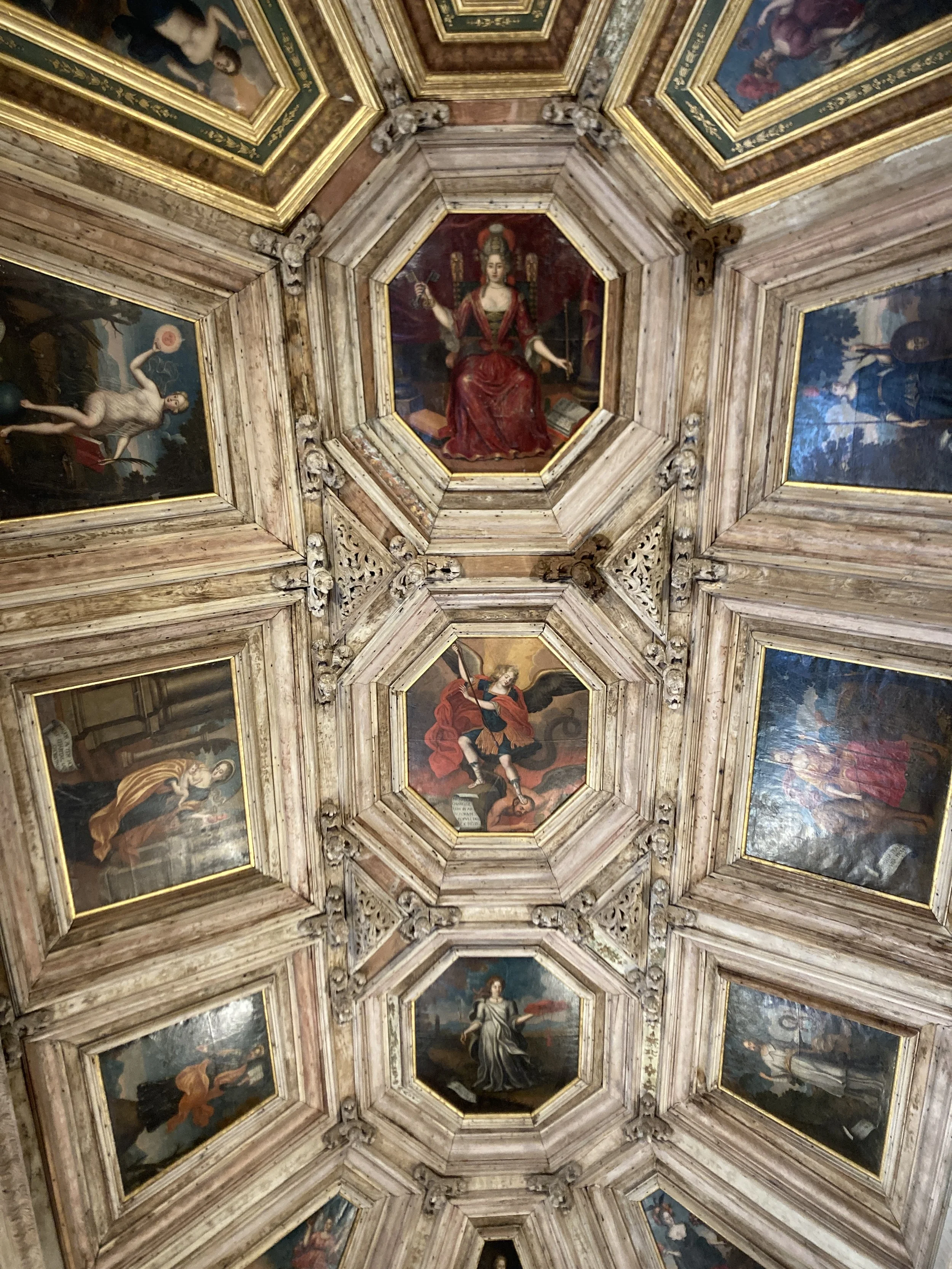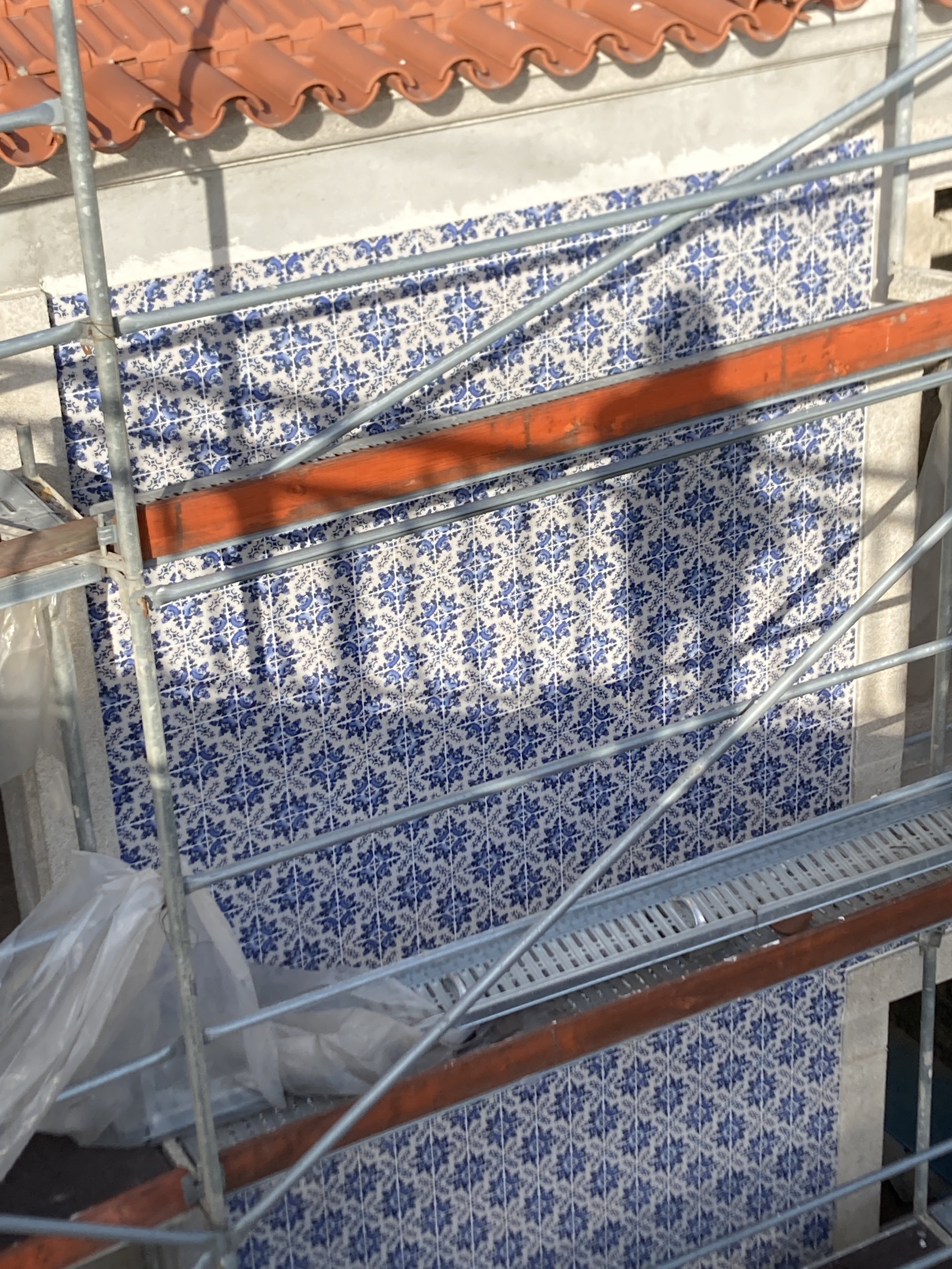Patterns in Porto
Even a short weekend in Porto is a revelation in colour, texture and pattern. This small, jewel of a city on the banks of the River Douro mixes Medieval walls and its trademark azulejo tiles with 18th-century polychrome carving, elaborate Victorian interiors and a riot of contemporary street art.
The hand-painted azulejo tiles are one of the first things to catch your eye. They cover the outside and inside of buildings, from the cloisters of the Sé Cathedral, to the São Bento Train Station, to the minimalist Casa da Música, to house after house along the picturesque streets. Often blue and white depicting religious or historic scenes, there are also wonderful geometric patterns. In São Bento, the entire station entrance hall is tiled with scenes from Portuguese history designed by Jorge Colaço in 1930.
In wood, the highlight has to be the Tree of Jesse at the Igreja da São Francisco. A misleadingly austere exterior to the church leads to audible gasps as you encounter the dazzling baroque interior, every inch covered in carved and gilded decoration. The Tree, by master craftsmen Filipe da Silva and António Gomes, is a polychrome marvel, completed in 1718-21 it shows the genealogy of Christ growing as a tree from the loins of Jesse of Bethlehem, who reclines at the base.
In plaster and mosaic, the Palácio da Bolsa is almost too ornate to absorb in one visit. On entering the stock exchange – literally a palace to finance – you first meet the Hall of Nations, complete with coats of arms of Portugal and its trading partners glowing above the floor mosaic inspired by Pompeii. But this pails into insignificance beside the Salão Árabe, inspired by the Alhambra, but also reminiscent of Brighton Pavilion, every surface dances with gold and colour, in decorative stucco or stained glass.
More subdued, but equally rich in materials is the art deco villa at Serralves, built by Carlos Alberto Cabral, the second Count of Vizela, in the 1920s-40s. Inspired by travels in Paris, it includes intricate inlaid wooden floors, alongside a powder-pink façade and neoclassical interior details. The villa’s aesthetic expands out into beautifully manicured gardens dotted with contemporary sculpture.
The gardens connect the villa with the Museu de Arte Contemporânea, a clean, white geometric, modern building designed by Álvaro Siza Vieira, and housing an impressive art collection, drawn into dialogue with the surrounding landscape through windows and skylights. Here a chance exhibition encounter was perhaps the greatest revelation of our visit.
Mark Bradford is an American artist (I am ashamed to say previously unknown to me) who is clearly redefining painting. His large canvases evoke tapestries, cartography, and the texture of urban street walls, layering materials to comment on societal structures and visual languages. His new series inspired by The Hunt of the Unicorn tapestries woven in the Netherlands around 1500, draw parallels between our contemporary world and the Middle Ages, equally threatened by pandemic disease.
Described by the curator as providing ‘resonant metaphor for contemporary conflicts and social tensions’, Bradford’s paintings rewarded extensive, close looking on a grey, rainy day in Porto. They also opened my eyes to the wider richness of surface colour and texture in the city, and to how just that layer speaks to so much of Porto’s beauty and compelling history.




































